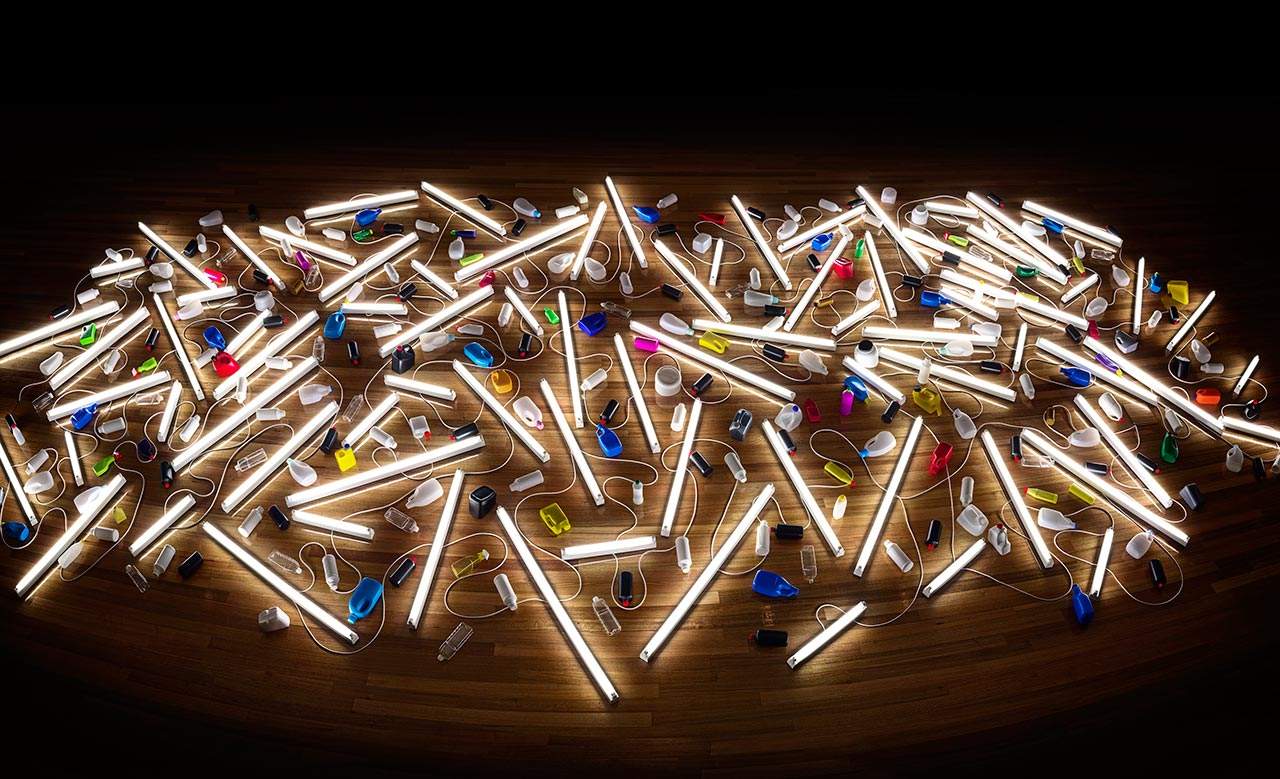Bill Culbert
Internationally acclaimed artist Bill Culbert plays with light and all its tricks.
Overview
Of the show-stopping exhibitions that are part of Sydney Festival, this one might creep under the radar. That’s not say there’s nothing spectacular about it. Harnessing the power of natural and artificial light, New Zealand-born artist Bill Culbert arranges everyday objects in poetic ways.
The centrepiece of this exhibition at the National Art School Gallery is undoubtedly Pacific Flotsam, an installation taking up most of the top floor. In addition to this, there are smaller and subtler works that give a deeper insight into Culbert’s practice, which spans more than 50 years.
Among his earliest works, Culbert’s black-and-white photographs are perceptive studies of light and form. From tight domestic shots to sweeping landscapes, there are sinister silhouettes of sharp utensils and lonely New Zealand roads and beaches. He works to materialise light and solidify shadows, creating a quiet stillness.
Light and wine are among Culbert’s favourite subjects, and he frequently pairs them in playful ways. For instance, there is the witty simplicity of Small Glass Pouring Light, which consists of a little glass of wine casting the shadow of a light-bulb. He also intensifies the reflectiveness of the wine — there is a sensory pleasure to the way this burgundy liquid magnifies the world around it.
Another interesting facet of this exhibition is the way Culbert understands space through light. It seems he often testing the limits of light – how far it can travel, how it pulls optical tricks and the way it can be ‘poured’ into a vessel. Fluorescent light is perhaps the most important part of Culbert’s sculptures. Often you’ll see these long tubes penetrating a line of empty plastic bottles. The way the light diffuses colour is particularly interesting — sometimes it reveals the inconsistency of the paint, the brittleness of the bottle or residual stains. These bleeding colours can be quite beautiful.
Often compared with Duchamp, Culbert’s art is also the art of re-use. He collects discarded objects, illuminates them and revitalises them. While some of his sculptures come across as mechanical reproductions of the same object, Pacific Flotsam is a wild scattering of bottles and lights – it is an image of organised chaos. This dazzling, large-scale installation was featured at the 55th Venice Biennale, and unlike the light-as-line works that seem to glue a set of containers together, this is a clutter of isolated things – no one thing is touching another. The light glows off the bottles in a different way, making their opacity glossy and their transparency almost invisible.
While Culbert’s practice comes across as effortless and intuitive, his works are quite thoughtful. These fluorescent sculptures could easily look brash and sterile; on the contrary, there is elegance to this bare technology. A sophisticated artist, he uses different strategies to think through the idea of light as both subject and object.





